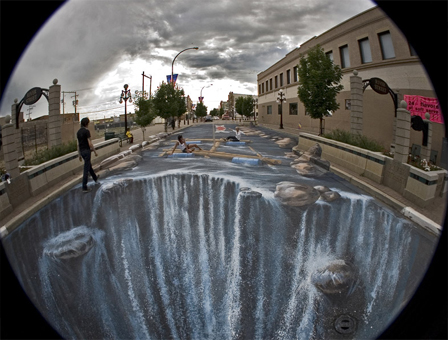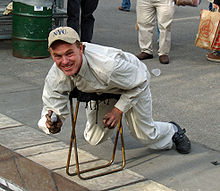Here’s the most famous paintings in the world ever. Famous paintings has been an inspiration to the development of culture and history. Famous artists in the world such as Van Gogh, Picasso, Vermeer, Renoir, Da Vinci, and Monet has made a lot of people captivated by their works over many centuries. If you are looking for paintings that have been famous in reproduction, here’s the list of the top 10 most famous paintings in the world.
10. From the Lake by Georgia O’Keeffe
This painting was drawn by Georgia O’Keefe when She spent her days at Lake George, New York in the early 1900s, which has inspired many of her works. This painting describe the gentle waves and ripples of Lake George.

From the Lake by Georgia O' Keeffe
This painting maybe the most famous painting by Salvador Dali, The Persistence of Memory was created in 1931 and is now displayed in the Museum of Modern Art in New York City. Salvador Dali introduced the melting pocket watches in this piece.

The Persistence of Memory by Salvador Dali
Pablo Picasso was a pioneer of the modern art movement called Cubism. Picasso is also widely acknowledged as the most important artist of the 20th century.

The Dream by Pablo Picasso
This famous painting by Monet was created in 1877. Monet is known as the classic impressionist. This painting is drawn in the Corner of the Garden at Montgeron, where Monet has captured the ever-changing nature of light and color.

Corner of the Garden at Montgeron by Claude Monet
This painting depicts a cafe in Arles,France specifically the Cafe Terrace and today the cafe is called Cafe van Gogh. The style of the painting is unique for Van Gogh with warm colors and depth of perspective.

Cafe Terrace at Night
This painting is a plain portrait of a girl, presumably before her wedding. The lack of background and color showcases her tear drop pearl earrings.

Girl with a Pearl Earring by Jan Vermeer
This painting depicts a group of Renoir’s friends relaxing on a balcony along the Seine River in France. In this painting Renoir has captured the joy of the middle class of late 19th century in France, it is a lively painting that brings happiness and excitement to any room.

Luncheon of the Boating Party by Pierre Auguste Renoir
The painting was painted by Gustav Klimt, the Vienna master,in 1907. The painting depicts a couple surrounded by a gold blanket and ornaments sharing a moment of shear passion: the perfect kiss.

The Kiss by Gustav Klimt
This is one of the most recognized paintings nowadays. Van Gogh’s Starry Night is a classic painting that invokes emotions from the serenity of the church steeple to the wild abandon of color used for the late night sky.

Starry Night by Vincent Van Gogh
Everyone will be agreed if The Mona Lisa is the world’s most famous painting. This painting is owned by the French government and hangs in the Louvre in Paris. The painting shows a woman looking out at the viewer with what is often described as an “enigmatic smile”. The Mona Lisa is perhaps the most famous piece in art history. If Monalisa sold, It will be the most expensive painting in the world ever, or maybe the most expensive art works in human history. Of course the
art prints copy of this painting is spread out all over the world.

Mona Lisa by Leonardo Da Vinci




































